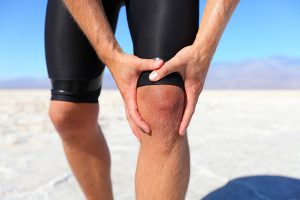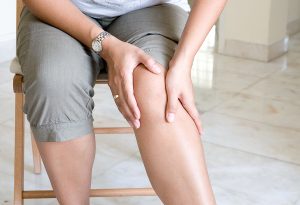Sports medicine is a field where medical professionals treat a variety of sports injuries in athletes. It’s also a field where special knowledge of the developing body is essential.
You don’t just have one sports doctor. The field involves a team of specialists including:
- Certified athletic trainers – On-field care and help with proper exercises and movements.
- Nutritionists – Personalized diets that help provide the fuel muscles need before, during, and after a game.
- Orthopedic doctors – Experts in diagnosing problems and determining the best path towards a recovery or to keep the problem from worsening.
- Physical therapists – Specialists in rehabilitation programs that aid recovery or maintain balance, flexibility, and mobility.
- Sports psychologists – Focus on the mental challenges after an injury and help with stress and focus, too.
Sports medicine isn’t just about injuries and recoveries. There’s also a lot of focus on preventing injuries. Sports medicine specialists look at how players move, identify what isn’t correct and likely to cause injury if the movement is corrected, and teach new movements or techniques that help with movements during a game and during warm-ups and cooldowns.
But, you have to have the right team. Bones stop growing between the ages of 16 and 18, but bone density continues into your 20s. For this very reason, pediatric sports medicine and adult sports medicine require different approaches.
Differences Between the Age Groups
Pediatric sports medicine focuses on teens and children under the age of 18. Because the bones are still developing, the healing process differs. The common injuries children and teens face are also different.
Children and teens have growth plates that are at risk of strain. Apophysitis is a stress injury causing inflammation where muscles and tendons connect to the growth plate. This is one of the most common injuries, and it’s one that adults don’t experience.
When a parent tells their child to play through the pain, it’s a mistake. The muscles and tendons need to rest to avoid additional injuries. So many areas of the body are growing, and apophysitis can occur in any of these areas:
- Foot
- Heel
- Hip
- Inner elbow
- Knee cap
- Upper arm near the shoulder
Apophysitis occurs with overuse, but it can also happen when jumping around. Any pain should be examined and diagnosed by a pediatric sports medicine specialist.
Adults tend to have more wear-and-tear injuries from years of activity. Arthritis is one of the most common degenerative conditions, but there are also issues like rotator cuff injuries, tendonitis, and bursitis. Among the most common injuries in adults are:
- Achilles Tendinitis
- Groin Strain
- Hamstring Strain
- Lower Back Pain
- Rotator Cuff Injury
- Runner’s Knee
- Shin Splints
- Sprained Ankle
- Tennis or Golfer’s Elbow
As adults don’t have a growth plate, treatments differ. However, adults can have other underlying issues that change a treatment path, such as osteoporosis, electrolyte imbalances, and travel fatigue/jet lag.
All ages are at risk of a concussion. That’s not an injury to take lightly as there can be serious complications. If your child or you as an adult are hit in the head during a game or practice, get checked out.
How Those Differences Impact Treatments
Pediatric sports medicine pays very close attention to the long-term development and protection of the growth plate. If the treatment isn’t carefully considered in terms of the developing body, it can be detrimental. There’s also a good deal of focus on proper warm-ups, cooldowns, and techniques that help lower the risk of future injuries.
Pain management also comes into play with children and teens but on a different level than an adult who is dealing with long-term pain from wear-and-tear injuries, such as arthritis in the knee.
Adults work on restoring as much function as possible to the joint, muscle, ligament, or tendon. Pain management is important, too. Rehabilitation may take longer as older bodies don’t always bounce back as fast as younger ones. If the injury is severe, surgery may be required, and that changes the recovery path.
Some injuries adults face can be bad enough that playing sports becomes impossible or requires changes that are hard to take. The psychological aspect of walking away from a sport that someone has been passionate about for decades can be hard. An adult sports medicine specialist helps with that psychological aspect.
Even the Education Differs
To become a sports medicine specialist, a student completes four years of med school. From there, the branch into adult sports medicine and pediatric sports medicine begins.
Pediatric sports medicine typically requires three extra years of training specifically in pediatrics. Then, there are up to two years in sports medicine that must be completed. Once all of this is completed, certification from the American Academy of Pediatrics is required.
Adult sports medicine requires a year-long fellowship in an ACGME-accredited sports medicine program after becoming a doctor in family medicine. After that, completion of the Sports Medicine exam is required.
If an athlete returns before the body is fully healed, additional damage is going to happen. A sports medicine specialist has to ensure a patient understands these risks and follows directions.
As there is more than a medical aspect to healing from a sports injury, doctors also study topics related to sports and recovery. It includes learning the best diet before and after games and practices. Effective warm-ups and cooldowns are also important for doctors to know. And, they have to know how to help with the psychological impact of injuries and the healing process. * Psychological aspects of injury and recovery for both age groups.
Always Work With a Sports Medicine Specialist Appropriate for Your Age Group
We like to think of it like this, you wouldn’t go to a psychiatrist to treat an ingrown nail. Why take your child to a doctor who specializes in adults, or as an adult, go to a pediatric doctor? You want a doctor with specialized insights into your physiology.
Whether you’re a parent with an injured child athlete or an adult with an injury, it’s imperative you work with the best doctor possible. Premium Sports & Orthopedics specializes in both adult and child sports medicine and has doctors who can help you recover from an injury. Take steps with your doctor to avoid future injuries. All it takes to get started is an online appointment.







